In this list, we’ll cover 20 different ways to become a prepared prepper, from building a stockpile of supplies to learning essential survival skills and staying physically fit. As we never know what the future may bring, it’s important to be prepared for any potential emergency or disaster.
Being a prepper means taking the necessary steps to protect yourself and your family in case of unexpected events such as natural disasters, economic collapse, or other crises. By implementing these steps, you can increase your chances of survival and provide peace of mind for you and your loved ones.
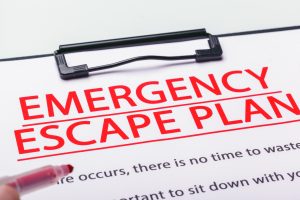
20 ways to be a prepared prepper
Educate yourself: Learn about the various threats that could arise and what you can do to prepare for them. It can be challenging to educate yourself on a potential emergency or disaster when you have no idea what might happen. However, there are some general steps you can take to prepare for various scenarios:
- Start by researching common emergencies: While you may not know what specific event will occur, you can still educate yourself on common emergencies that can happen in your area or around the world. This could include natural disasters such as hurricanes, earthquakes, and floods, or man-made crises like economic collapse or civil unrest.
- Look for patterns: Once you’ve identified common emergencies, look for patterns that can help you prepare. For example, if you live in an area prone to hurricanes, research the historical frequency, severity, and impacts of hurricanes in your area to better understand what you can expect and how to prepare.
- Read survival books and articles: There are many books and articles available that cover various survival scenarios, which can help you develop a better understanding of the steps you can take to protect yourself and your family in case of an emergency.
- Attend survival workshops and classes: Consider attending survival workshops and classes to learn practical skills such as wilderness survival, first aid, and self-defense.
- Join a community: Joining a community of like-minded individuals who are interested in prepping can be a valuable source of knowledge and support. You can share information and learn from others who have more experience in this area.
Remember, the key to educating yourself as a prepper is to be proactive and to stay informed. While it may be impossible to predict every potential emergency, taking the time to prepare for common scenarios and developing the necessary skills can help you to be better prepared for whatever may come your way.
Create a plan
Create a plan: Create a comprehensive emergency plan for you and your family, including evacuation routes and communication methods. Sure it can be daunting to create a plan when anything could happen, but the truth is that having a plan is one of the most important things you can do to prepare for an emergency or disaster. Here are some steps to help you create a comprehensive emergency plan:
- Identify potential scenarios: While you may not know exactly what will happen, you can identify potential scenarios that could occur based on where you live, your lifestyle, and your personal situation. This could include natural disasters, economic crises, power outages, or civil unrest.
- Determine your needs: Once you have identified potential scenarios, determine what your needs will be in each situation. Consider your basic needs for food, water, shelter, and medical supplies, as well as any specific needs related to the scenario.
- Create a communication plan: Develop a communication plan with family members or close friends, including backup methods of communication in case traditional methods are unavailable. Ensure that everyone knows the plan and has access to emergency contact information.
- Establish an evacuation plan: Develop an evacuation plan with multiple escape routes and meeting points, and make sure everyone knows the plan. Consider different scenarios, such as a sudden evacuation or one that requires more preparation.
- Create a shelter-in-place plan: Develop a plan for staying in place, such as at home, in case evacuation is not possible or recommended. Identify the necessary supplies, including food, water, and medical supplies, and make sure you have enough for everyone in your household.
- Prepare for special needs: Consider any special needs that you or your family members may have, such as medical needs or mobility issues, and make sure you have supplies and equipment to meet those needs in an emergency.
- Practice the plan: Regularly practice the plan with your family members, including emergency drills and simulations, to ensure that everyone knows what to do and can act quickly in a crisis.
Remember, the key to creating a plan when anything could happen is to be proactive and prepared. While you can’t predict the future, taking these steps can help you be better prepared for whatever may come your way.

The Prepared Prepper will Build a stockpile
Build a stockpile: Stockpile non-perishable food, water, medicine, and other necessary supplies to survive for at least several months. Building a stockpile of non-perishable food, water, medicine, and other necessary supplies is a critical step in preparing for an emergency or disaster. Here are some tips to help you build a stockpile:
- Calculate your needs: Before you start building your stockpile, calculate how much food, water, and supplies you will need for the number of people in your household, for the length of time you want to be prepared for. It is recommended to have at least 3 to 6 months of supplies for an emergency.
- Choose non-perishable foods: Focus on non-perishable foods that have a long shelf life, such as canned goods, dried beans, rice, pasta, and powdered milk. Make sure you have a variety of foods that can provide a balance of nutrients.
- Consider your dietary needs: If you have any special dietary needs, make sure you have enough food and supplies to meet those needs. Consider stocking up on gluten-free products, low-sodium options, or other specialty items.
- Store water: Store at least one gallon of water per person per day, for drinking and sanitation purposes. It is recommended to have at least 3 to 6 months of water supply.
- Stock up on essential supplies: In addition to food and water, make sure you have other essential supplies such as medical supplies, batteries, flashlights, and hygiene products.
- Rotate your stockpile: It is important to regularly rotate your stockpile to ensure that the items you have stored are still fresh and usable. Make sure to use and replace items before they expire or go bad.
- Store your stockpile properly: Store your stockpile in a cool, dry place away from sunlight, moisture, and pests. Consider using airtight containers to protect your supplies.
By building a stockpile of non-perishable food, water, medicine, and other necessary supplies, you can be better prepared for an emergency or disaster. Remember to regularly rotate your stockpile and store your supplies properly to ensure they are still usable when you need them.
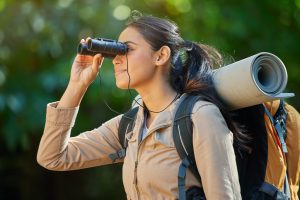
Have a bug-out bag
Have a bug-out bag: A bug-out bag is a portable kit that contains essential items you would need to survive for 72 hours in case of an emergency or disaster. The contents of a bug-out bag can vary depending on personal needs and the situation, but here are some items that should be included:
- Water and a water filter: Include at least 1 liter of water per day per person, and a water filter or purification tablets to make additional water safe to drink.
- Non-perishable food: Include enough non-perishable food for 72 hours, such as energy bars, canned food, and dried fruit.
- First aid kit: Include a basic first aid kit that contains items such as bandages, antiseptic wipes, and pain relievers.
- Important documents: Include copies of important documents such as identification, insurance policies, and emergency contact information.
- Cash and coins: Include some cash and coins in small denominations in case electronic payment methods are not available.
- Emergency shelter: Include a lightweight, waterproof tarp or tent to use as an emergency shelter.
- Multi-purpose tool: Include a multi-purpose tool such as a Swiss Army Knife or a Leatherman that can be used for a variety of tasks.
- Warm clothing: Include warm clothing and extra socks in case of cold weather.
- Communication device: Include a cell phone or a two-way radio to stay in contact with others in case of an emergency.
- Personal hygiene items: Include personal hygiene items such as toothbrushes, toothpaste, and wet wipes.
It is recommended that everyone in the house have their own bug-out bag, so that they are each prepared for any situation that may arise. This ensures that everyone has their own set of essentials, and that they are not relying on one person’s bug-out bag. Additionally, having a bug-out bag for each person means that they can each carry their own supplies if needed, making it easier to move quickly if an evacuation is required.
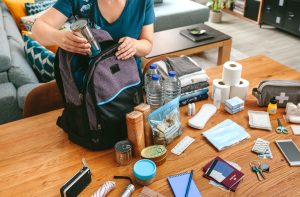
Prepared Prepper basic survival skills
Know basic survival skills: Learning basic survival skills is an important part of being prepared for an emergency or disaster. Here are some ways to learn these essential skills:
- Take a course: Look for local courses or workshops that teach basic survival skills. Organizations such as the Red Cross or the Boy Scouts often offer classes on topics such as first aid, wilderness survival, and outdoor cooking.
- Read books and articles: There are many books and articles available that cover a variety of survival skills. Look for publications that cover topics such as building shelter, starting fires, purifying water, and finding food in the wild.
- Watch videos: There are many instructional videos available online that can teach you survival skills. Look for videos that are created by reputable sources, and be sure to practice what you learn in a safe environment.
- Practice in a safe environment: Find a safe place to practice your skills, such as a local park or wooded area. Start by practicing basic skills such as building a fire or purifying water, and gradually work up to more advanced skills such as building a shelter.
- Attend survival camps or expeditions: Consider attending a survival camp or expedition where you can learn and practice survival skills in a controlled environment.
- Join a survival group: Joining a group of like-minded individuals who are interested in survival skills can be a great way to learn and practice new skills. You can share information and learn from others who have more experience in this area.
Remember, the key to learning basic survival skills is to start with the basics and gradually build up your skills. Always practice in a safe environment, and never take unnecessary risks when practicing your skills. By learning these essential survival skills, you can increase your chances of surviving in an emergency or disaster.
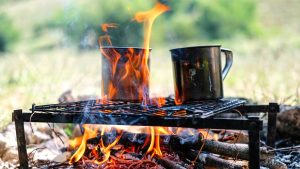
Get fit to be a Prepared Prepper
Get fit: Staying physically fit is an important part of being prepared for an emergency or disaster. Here are some ways to get fit:
- Start with a physical assessment: Before starting a fitness routine, it is important to get a physical assessment from a healthcare provider to identify any potential health risks.
- Set fitness goals: Identify specific fitness goals such as losing weight, building strength, or increasing endurance.
- Create a workout plan: Create a workout plan that includes a variety of activities such as cardio, strength training, and flexibility exercises. Make sure to start slowly and gradually increase the intensity of your workouts.
- Get outside: Consider incorporating outdoor activities such as hiking or cycling into your fitness routine to build endurance and enjoy nature.
- Find a workout partner: Working out with a partner can help you stay motivated and hold you accountable for your fitness goals.
- Take classes: Consider taking fitness classes such as yoga, Pilates, or martial arts to build strength, flexibility, and endurance.
- Be consistent: Consistency is key to achieving fitness goals. Make sure to stick to your workout plan and make exercise a regular part of your routine.
Remember, staying physically fit is not only important for emergency preparedness but also for overall health and well-being. By following these tips, you can increase your fitness level and be better prepared to handle physically demanding tasks in case of an emergency or disaster.
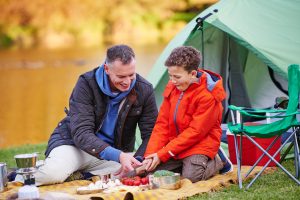
To be a Prepared Prepper is to know your Community
Having a backup power source is an important part of emergency preparedness. Here are some details on different types of backup power sources:
- Generators: A generator is a machine that produces electricity by burning fuel, such as gasoline or propane. Portable generators can be used to power essential appliances and electronics during a power outage. They can be loud and require regular maintenance, but they are a reliable backup power source.
- Solar panels: Solar panels generate electricity by converting sunlight into energy. They can be used to power appliances and electronics during a power outage, and they are a clean and renewable energy source. However, they can be expensive to install and require direct sunlight to produce electricity.
- Batteries: Batteries can be used to store energy from a generator or solar panels, and can be used to power essential electronics during a power outage. They are quiet and require minimal maintenance, but they have a limited capacity and may need to be recharged frequently.
When choosing a backup power source, consider your specific needs and situation. If you live in an area with frequent power outages, a generator may be the best option. If you are concerned about environmental impact, solar panels may be a better choice. If you need a quiet and reliable power source, batteries may be the way to go.
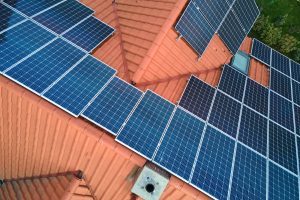
Regardless of the type of backup power source you choose, make sure to follow safety guidelines and properly maintain your equipment to ensure that it is ready when you need it. Keep extra fuel or batteries on hand, and make sure to test your backup power source regularly to ensure that it is functioning properly. By having a backup power source, you can ensure that you have the power you need to stay safe and comfortable during a power outage or emergency.
The Prepared Prepper will learn to grow food
Learning to grow your own food is an important part of emergency preparedness. Here are some details on how to get started:
- Choose the right location: Choose a location for your garden that receives plenty of sunlight and has well-draining soil. Consider the amount of space you have available and choose plants that are appropriate for the size of your garden.
- Start small: If you’re new to gardening, start with a small plot and choose easy-to-grow vegetables such as tomatoes, cucumbers, or lettuce. As you gain experience, you can expand your garden and try growing more challenging crops.
- Invest in the right equipment: Invest in basic gardening equipment such as a hoe, shovel, and watering can. Consider using raised beds or containers if you have limited space or poor soil quality.
- Choose the right plants: Choose plants that are well-suited to your climate and soil conditions. Consider planting a mix of vegetables and fruits to ensure a diverse harvest.
- Use proper planting techniques: Plant your crops at the right time of year and follow proper planting techniques to ensure a successful harvest. Make sure to water your plants regularly and provide them with appropriate fertilizers and soil amendments.
- Learn about preservation: Learn how to preserve your harvest by canning, freezing, or dehydrating fruits and vegetables. This will help you store your produce for use during an emergency or disaster.
- Consider community gardening: Consider joining a community garden or starting one in your own neighborhood. This can be a great way to learn from experienced gardeners, share resources, and build community relationships.
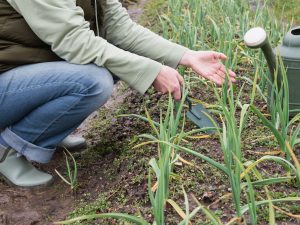
Remember, growing your own food can be a rewarding and sustainable way to ensure that you have fresh produce in an emergency. By following these tips, you can learn how to grow your own food and be better prepared for any situation.
Have a communication plan
Having a communication plan means setting up a system to stay in touch with family and friends during an emergency or disaster, especially if traditional methods of communication such as phone calls or text messages are not available. Here are some steps to create a communication plan:
- Identify emergency contacts: Identify family members, friends, and neighbors who you can contact in case of an emergency. Make sure to include their phone numbers, email addresses, and other contact information.
- Choose a communication method: Choose a method of communication that works for everyone in your emergency contacts list. This could be a group chat, social media platform, or email list.
- Establish a meeting place: Establish a meeting place in case you are unable to communicate through electronic means. This could be a local park, community center, or a specific location in your neighborhood.
- Make sure everyone knows the plan: Make sure that everyone in your emergency contacts list knows the communication plan and has access to the chosen method of communication.
- Practice the plan: Practice the plan with your family and friends so that everyone knows what to do in case of an emergency. This will help ensure that everyone is prepared and can stay in touch during a crisis.
Having a communication plan can help you stay in touch with loved ones and ensure that everyone is safe during an emergency or disaster. Make sure to regularly review and update your communication plan as needed to ensure that it is up-to-date and effective.

In an emergency or disaster, traditional methods of communication such as phone calls or text messages may not be available. Here are some alternative methods of communication to stay in touch with family and friends:
- Social media: Social media platforms such as Facebook, Twitter, and Instagram can be useful for staying in touch with family and friends during an emergency. Make sure to exchange usernames or handles ahead of time.
- Email: Email is a reliable way to communicate during an emergency, as it is less likely to be affected by network congestion. Make sure to exchange email addresses ahead of time.
- Two-way radios: Two-way radios are a good option for short-range communication, especially in areas where cell phone coverage may be limited.
- Satellite phones: Satellite phones can be used to make phone calls and send messages in areas where traditional phone service is not available. Keep in mind that satellite phones can be expensive and may require a subscription.
- Ham radios: Ham radios can be used to communicate over long distances and can be useful in emergency situations. However, they require a license to operate and some training to use effectively.
- Message boards: Message boards can be set up in a central location, such as a community center or public space, to post messages for loved ones.
Remember to exchange contact information and practice using alternative methods of communication ahead of time so that you are prepared in case of an emergency or disaster. Be sure to also establish a communication plan and choose a method of communication that works for everyone in your family or friend group. By staying in touch during an emergency, you can help ensure that everyone is safe and accounted for.
A ham radio license is a great resource for the Prepared Prepper
Getting a ham radio license can be a valuable skill for emergency preparedness. Here’s what it takes to obtain a ham radio license:
- Study for the exam: The first step in getting a ham radio license is to study for the exam. There are several resources available, including study guides, online courses, and practice exams.
- Find an exam location: Once you are ready to take the exam, you will need to find an exam location near you. You can find exam sessions by searching online or contacting a local amateur radio club.
- Take the exam: The ham radio license exam consists of multiple-choice questions on topics such as radio theory, regulations, and operating practices. The exam is administered by volunteer examiners and typically takes about an hour to complete.
- Get your license: If you pass the exam, you will receive your ham radio license from the Federal Communications Commission (FCC). There are three levels of ham radio licenses: Technician, General, and Extra, each with its own privileges and requirements.
- Purchase equipment: Once you have your ham radio license, you will need to purchase equipment to get on the air. This can include a radio, antenna, and other accessories.
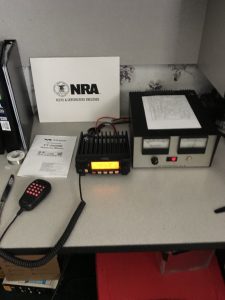
Remember, obtaining a ham radio license requires some studying and preparation, but it can be a valuable skill for emergency communication and staying informed during a crisis. By joining a local amateur radio club, you can also connect with other preppers and learn from experienced radio operators.
Get firearms training
Getting proper firearms training is an important part of responsible gun ownership and can help you effectively use firearms for self-defense. Here are some steps to get firearms training:
- Find a certified instructor: Look for a certified firearms instructor who is knowledgeable and experienced in firearm safety and handling. You can find instructors through the National Rifle Association (NRA) or other firearms organizations.
- Take a basic firearms safety course: Take a basic firearms safety course to learn the basics of firearm safety and handling. This will cover topics such as safe firearm storage, basic shooting techniques, and firearm maintenance.
- Take advanced training courses: Consider taking advanced firearms training courses to improve your shooting skills and learn how to handle firearms in different situations. This could include courses on defensive shooting, shooting from cover, or shooting on the move.
- Practice regularly: Practice regularly at a range to maintain your shooting skills and become more comfortable with firearms. Make sure to follow all safety rules and guidelines when handling firearms.
- Seek additional training: Seek additional training on legal and ethical issues surrounding the use of firearms for self-defense. This can include courses on self-defense law and use-of-force principles.
Remember, responsible gun ownership includes getting proper firearms training and regularly practicing safe firearm handling techniques. By following these steps, you can learn how to safely and effectively use firearms for self-defense
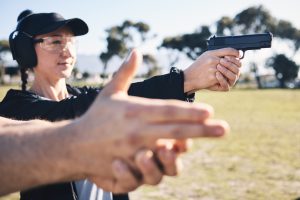
Learn self-defense to be a Prepared Prepper
Learning self-defense is an important part of staying safe and protecting yourself and your family. Here are some details on where and how to learn self-defense:
- Martial arts classes: Martial arts classes, such as karate, judo, or jiu-jitsu, can teach you basic self-defense techniques and help you improve your physical fitness. Look for classes that focus on practical self-defense techniques rather than competition.
- Self-defense classes: Self-defense classes are specifically designed to teach you techniques for defending yourself in real-life situations. Look for classes that cover a variety of scenarios, such as standing attacks, ground attacks, and multiple attackers.
- Online resources: There are many online resources available, such as videos and articles, that can teach you basic self-defense techniques. However, it’s important to remember that these resources should supplement, not replace, in-person training.
- Local law enforcement: Contact your local law enforcement agency to see if they offer self-defense classes or can recommend reputable instructors in your area.
- Personal trainers: Personal trainers who specialize in self-defense or combat training can provide individualized training and help you improve your physical fitness as well.
When learning self-defense, it’s important to choose a reputable instructor who has experience teaching self-defense and focuses on practical techniques that can be used in real-life situations. Make sure to practice regularly and seek out additional training as needed. Remember, the goal of self-defense is to avoid or escape dangerous situations whenever possible, so always prioritize your safety and be aware of your surroundings.
Get a water filtration system
Having a water filtration system is an important part of emergency preparedness. Here are some details on how and where to get a water filtration system:
- Determine your water filtration needs: Determine what type of water filtration system you need based on your specific situation. Consider factors such as the size of your household, the quality of your water source, and the type of contaminants you need to remove.
- Research different water filtration systems: There are many types of water filtration systems available, including portable water filters, pitcher filters, countertop filters, under-sink filters, and whole-house filters. Research different options and choose the one that best meets your needs and budget.
- Purchase from a reputable retailer: Purchase your water filtration system from a reputable retailer or manufacturer. Look for products that are certified by third-party organizations such as NSF International or the water Quality Association.
- Install and maintain your system: Follow the manufacturer’s instructions for installing and maintaining your water filtration system. Regularly replace filters as needed to ensure that your water remains safe and clean.
- Consider emergency water storage: In addition to a water filtration system, consider storing a supply of emergency water in case the water supply is compromised. The Centers for Disease Control and Prevention (CDC) recommends storing at least one gallon of water per person per day for at least three days.

When purchasing a water filtration system, it’s important to choose a product that is appropriate for your specific needs and is certified by reputable organizations. Make sure to also regularly maintain your system and store a supply of emergency water to ensure that you have access to safe drinking water during an emergency or disaster.
Here are some specific water filtration systems and their prices:
- Whole-house filtration system: The cost of a whole-house filtration system can range from $500 to $5,000, depending on the size of the system and the type of contaminants it removes.
- Point-of-use filtration system: The cost of a point-of-use filtration system can range from $50 to $500, depending on the type of system and the type of contaminants it removes.
- Portable filtration system: The cost of a portable filtration system can range from $20 to $200, depending on the size of the system and the type of contaminants it removes.
It is important to note that these are just a few examples of water filtration systems, and there are many other options available. The best way to choose a water filtration system is to consult with a qualified professional.
Have cash on hand
There are a few reasons why it’s important to have cash on hand in case of an emergency.
- Power outages: In the event of a power outage, electronic payment systems may not be available. This could make it difficult or impossible to buy food, water, or other essential supplies. Having cash on hand will ensure that you can still make purchases even if the power is out.
- Natural disasters: Natural disasters, such as hurricanes, floods, and earthquakes, can damage or destroy infrastructure, including power lines and communication networks. This can make it difficult or impossible to use electronic payment systems. Having cash on hand will allow you to make purchases even if the power is out and you can’t use your credit or debit card.
- Civil unrest: In the event of civil unrest, such as a riot or a protest, electronic payment systems may be disrupted or unavailable. Having cash on hand will allow you to make purchases even if the power is out and electronic payment systems are not working.
It’s important to note that cash is not always the best option in an emergency. For example, if you are fleeing a natural disaster, it may be difficult to carry large amounts of cash with you. In these cases, it may be better to have a small amount of cash on hand and other forms of payment, such as a credit or debit card.
It’s also important to store your cash in a safe place. You don’t want it to be stolen or lost in the event of an emergency. A good place to store your cash is in a fireproof safe.
The Prepared Prepper will Have a bug-in plan
Having a bug-in plan means preparing to stay in your home for an extended period of time in the event of an emergency or disaster. This is also known as sheltering in place. Here are some steps to develop a bug-in plan:
- Assess your situation: Determine what type of emergency or disaster you may face and how it could impact your home. This could include natural disasters such as hurricanes or earthquakes, or man-made disasters such as power outages or civil unrest.
- Stock up on supplies: Stock up on essential supplies such as non-perishable food, water, medications, and first aid supplies. Make sure to have enough supplies to last for at least a few weeks.
- Secure your home: Make sure your home is secure and can withstand potential threats such as high winds, flooding, or civil unrest. Consider installing storm shutters or reinforcing doors and windows.
- Develop a communication plan: Develop a communication plan with family members and friends in case traditional communication methods such as phone or internet are not available. This could include using walkie-talkies, radios, or other communication devices.
- Plan for sanitation: Plan for sanitation needs such as waste disposal and personal hygiene. This could include setting up a temporary toilet or using sanitary wipes.
- Stay informed: Stay informed about the situation and any updates from local authorities. Have a battery-powered radio or other communication device on hand to stay informed.
- Prepare for emergencies: Prepare for potential emergencies such as medical emergencies, power outages, or fires. Have a first aid kit and fire extinguisher on hand, and know how to use them.
By developing a bug-in plan, you can be better prepared to stay in your home for an extended period of time in case of an emergency or disaster. Remember to regularly review and update your plan to ensure that it remains effective and relevant to your situation.
Have a bug-out vehicle
Having a bug-out vehicle means having a vehicle that is ready to go at a moment’s notice in case you need to evacuate quickly in the event of an emergency or disaster. Here are some steps to prepare a bug-out vehicle:
- Choose the right vehicle: Choose a vehicle that is reliable and can handle different types of terrain and weather conditions. An SUV, truck, or off-road vehicle may be a good option.
- Prepare the vehicle: Prepare the vehicle for emergency situations by outfitting it with supplies such as a first aid kit, food, water, and extra clothing. Make sure to also include any tools or equipment that you may need, such as a shovel or tire repair kit.
- Maintain the vehicle: Regularly maintain the vehicle to ensure that it is in good working condition. This includes keeping the gas tank full and checking the tires, brakes, and other systems regularly.
- Keep important documents on hand: Keep important documents such as identification, insurance policies, and medical records in a waterproof and fireproof container in the vehicle.
- Practice using the vehicle: Practice using the vehicle and make sure that everyone who may need to use it knows how to operate it. This includes driving in different conditions and loading and unloading supplies quickly and efficiently.
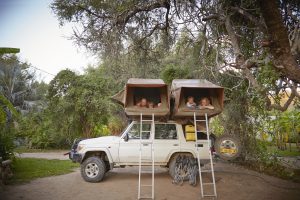
Remember, having a bug-out vehicle is just one part of emergency preparedness. It’s also important to have a bug-out bag and a bug-out plan in place. By preparing your vehicle, you can ensure that you are ready to evacuate quickly and safely in the event of an emergency or disaster.
Learn to repair items to be a Prepared Prepper
Learning how to repair items yourself can be a valuable skill that can save you money and increase your self-sufficiency. Here are some places where you can learn to repair items:
- Community classes: Many communities offer classes on repairing various items such as appliances, furniture, and electronics. These classes are often available through local community centers, libraries, or schools.
- Online tutorials: There are many online tutorials available that can teach you how to repair items yourself. YouTube is a great resource for finding instructional videos on a wide variety of topics.
- Repair cafes: Some cities have repair cafes where volunteers will help you repair your items for free or for a small fee. These cafes are often hosted by community groups or non-profit organizations.
- Maker spaces: Maker spaces are communal workspaces where people can learn new skills and work on projects together. Many maker spaces offer workshops and classes on repairing items and using tools and equipment.
- Apprenticeships: Consider seeking out an apprenticeship with a skilled tradesperson or craftsman to learn how to repair items in a hands-on setting.
By learning how to repair items yourself, you can save money on repairs and become more self-sufficient. Plus, repairing items can be a fun and rewarding hobby. Look for classes or resources in your community or online to get started.

The Prepared Prepper library of survival books
Here is a list of survival books and where you can purchase them:
- “SAS Survival Handbook: The Ultimate Guide to Surviving Anywhere” by John “Lofty” Wiseman – available on Amazon, Barnes & Noble, and other book retailers.
- “The Complete SAS Survival Manual” by Barry Davies – available on Amazon, Barnes & Noble, and other book retailers.
- Bushcraft 101: A Field Guide to the Art of Wilderness Survival” by Dave Canterbury – available on Amazon, Barnes & Noble, and other book retailers.
- “The Encyclopedia of Country Living” by Carla Emery – available on Amazon, Barnes & Noble, and other book retailers.
- “The Prepper’s Blueprint: The Step-By-Step Guide To Help You Through Any Disaster” by Tess Pennington – available on Amazon, Barnes & Noble, and other book retailers.
- “The Survival Medicine Handbook: A Guide for When Help is Not on the Way” by Joseph Alton and Amy Alton – available on Amazon, Barnes & Noble, and other book retailers.
- “When All Hell Breaks Loose: Stuff You Need To Survive When Disaster Strikes” by Cody Lundin – available on Amazon, Barnes & Noble, and other book retailers.
- “Emergency food Storage & Survival Handbook: Everything You Need to Know to Keep Your Family Safe in a Crisis” by Peggy Layton – available on Amazon, Barnes & Noble, and other book retailers.
- “Deep Survival: Who Lives, Who Dies, and Why” by Laurence Gonzales – available on Amazon, Barnes & Noble, and other book retailers.
- “The Disaster Preparedness Handbook: A Guide for Families” by Arthur T. Bradley – available on Amazon, Barnes & Noble, and other book retailers.
- “The Art of Eating Through the Zombie Apocalypse: A Cookbook and Culinary Survival Guide” by Lauren Wilson – available on Amazon, Barnes & Noble, and other book retailers.
- “Prepper’s Long-Term Survival Guide: food, Shelter, Security, Off-the-Grid Power and More Life-Saving Strategies for Self-Sufficient Living” by Jim Cobb – available on Amazon, Barnes & Noble, and other book retailers.
- “The Ultimate Guide to Wilderness Living: Surviving with Nothing But Your Bare Hands and What You Find in the Woods” by John McPherson – available on Amazon, Barnes & Noble, and other book retailers.
- “Prepper’s Home Defense: Security Strategies to Protect Your Family by Any Means Necessary” by Jim Cobb – available on Amazon, Barnes & Noble, and other book retailers.
- The Pocket Outdoor Survival Guide: The Ultimate Guide for Short-Term Survival” by J. Wayne Fears – available on Amazon, Barnes & Noble, and other book retailers.
- “The Survival Handbook: Essential Skills for Outdoor Adventure” by Colin Towell – available on Amazon, Barnes & Noble, and other book retailers.
- “The Ultimate Survival Medicine Guide: Emergency Preparedness for Any Disaster” by Joseph Alton and Amy Alton – available on Amazon, Barnes & Noble, and other book retailers.
- “Primitive Technology: A Survivalist’s Guide to Building Tools, Shelters, and More in the Wild” by John Plant – available on Amazon, Barnes & Noble, and other book retailers.
- “The Self-Sufficient Life and How to Live It: The Complete Back-to-Basics Guide” by John Seymour – available on Amazon, Barnes & Noble, and other book retailers.
- “The Forager’s Harvest: A Guide to Identifying, Harvesting, and Preparing Edible Wild Plants” by Samuel Thayer – available on Amazon, Barnes & Noble, and other book retailers.
- “Surviving Doomsday: A Guide for Surviving an Urban Disaster” by Richard Duarte – available on Amazon, Barnes & Noble, and other book retailers.
- “The Urban Prepper: A Quick Start Handbook for Modern Day Preppers to Prepare for Any Disasters” by Kevin Mack – available on Amazon, Barnes & Noble, and other book retailers.
- “The Backyard Homestead: Produce All the food You Need on Just a Quarter Acre!” by Carleen Madigan – available on Amazon, Barnes & Noble, and other book retailers.
- “100 Deadly Skills: Survival Edition: The SEAL Operative’s Guide to Surviving in the Wild and Being Prepared for Any Disaster” by Clint Emerson – available on Amazon, Barnes & Noble, and other book retailers.
- “Survival Mom: How to Prepare Your Family for Everyday Disasters and Worst-Case Scenarios” by Lisa Bedford – available on Amazon, Barnes & Noble, and other book retailers.
These books can be purchased online through retailers such as Amazon or Barnes & Noble, or in-store at bookstores such as Barnes & Noble or local independent bookstores. Additionally, many public libraries may carry these titles or have access to them through interlibrary loan.
Practice your skills to be a Prepared Prepper
Regularly practicing your skills is crucial for emergency preparedness. Here are some ways to practice your skills:
- Attend workshops and classes: Attend workshops and classes that focus on emergency preparedness and survival skills. Many communities offer classes on topics such as first aid, fire safety, and wilderness survival.
- Join a local prepper group: Join a local prepper group to connect with like-minded individuals who are also interested in emergency preparedness. These groups often offer opportunities to practice your skills and learn from others.
- Go on camping or hiking trips: Going on camping or hiking trips is a great way to practice wilderness survival skills and test your gear. Make sure to bring your bug-out bag and other emergency supplies with you.
- Participate in mock drills: Participate in mock drills with family and friends to practice your emergency plan and test your skills in a simulated emergency situation.
- Use online resources: Use online resources such as instructional videos and forums to learn new skills and techniques. You can also use online tools to create and update your emergency plan.
Remember to regularly review and update your emergency plan and practice your skills to ensure that you are prepared for any emergency or disaster.
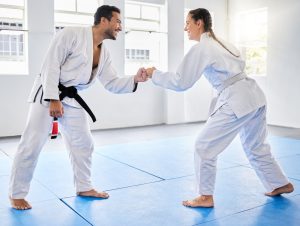
Conclusion
Being a prepared prepper means being ready for whatever might happen. By following the 20 ways outlined in this plan, you can increase your chances of survival in an emergency or disaster. Here are some best practices to ensure that you are the most prepared:
- Stay informed: Keep up to date with news and weather updates so that you can adjust your emergency plan as necessary.
- Review and update your plan regularly: Make sure to review and update your emergency plan on a regular basis. Make any necessary changes based on new information or changes in your situation.
- Practice your skills: Regularly practice your survival and emergency preparedness skills to ensure that you are ready for any situation.
- Build a strong community: Get to know the people in your community and build strong relationships with them. This can help you during an emergency or disaster.
- Maintain your supplies: Regularly check and maintain your supplies to ensure that they are in good condition and up to date.
- Stay organized: Keep your emergency supplies and gear organized and easy to access. Make sure that everyone in your household knows where everything is located.
By following these best practices, you can be the most prepared prepper possible. Remember, being prepared is not about being paranoid, but rather about being proactive and taking steps to protect yourself and your loved ones in the event of an emergency or disaster.


